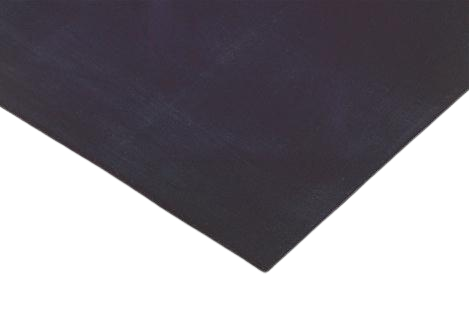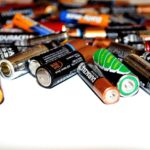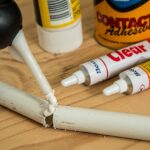
Since the inauguration of the world, rubber was only found in rubber trees and other similar plants. In the 20th century, scientists and technology successfully introduced artificial methods to produce rubber. Now we can create a variety of rubber types using petroleum byproducts and petroleum.
What is Rubber?
It is a material widely used in domestic and industries. It is a tough elastic substance that is produced from the latex of a plant. There are two types of rubbers, man-made and naturally produced rubber. In this article, we will see the major types of rubbers. It is a soft material, elastic, and malleable. Add to this, and it is chemical as well as physical properties are both incredibly attractive for the manufacturers.
What are the Basic Properties of Rubbers?
Durability is the first property of rubbers, because of which rubbers becomes different from other substances. Rubbers are durable, and it resists damage and also resists forces that can damage it. It is also resistant to water and temperature and absorbs less heat.
Thermal contraction is the next important property of rubber. When we stretched the rubber, it came back to its original shape. This property in rubbers makes them different. When we stretch the rubber, its molecules chain aligns the molecules, and this is a very common phenomenon. Next to this, when we stop exerting force on the rubber, its molecules chain is reshaped. Molecules were attached in a chain and gained their original positions again easily.
Thermal contraction is the next property on the list. When we heat any metal, it expands but rubbers contracts. Rubber has different behavior in this regard. Heat tangled the molecule’s chains in the rubber, and when we removed the heat, it regained its position.
Different Types of Rubbers:
When we are talking about rubbers types, we have three major types of rubbers.
- Natural rubber
- Silicone rubber
- Synthetic rubber
- EPDM
- Nitrite
- Butyl
- Neoprene
- Fluro elastomer
- SBR
Natural Rubber:
There is a tree name para rubber, and most of the natural rubbers are extracted from the latex sap of this tree. Natural rubber is also called isoprene, its strength is high, and It is less resistant to heat, light, and other damages from the ozone. It is the raw material rubbers extracted from the tree. It is being used in the creation of more than 400,000 products. It’s being used in devices, aircraft, cars, tires, tubes, pacifiers, clothes, toys, etc. if we talk about the production of latex from a tree, then 20000 species of tree produce rubber, but only 2500 trees of latex contain rubber. This has limited the production of natural rubber, and the need for synthetic rubber came into existence.
Silicone Rubber:
This is the next type of rubber being used at a massive level in all industries. This is neither synthetic nor natural rubber. It is resistant to low and high temperatures; it is durable, versatile, and flexible. Because of its temperature-resistant behavior, it is being used in consumer products, which include construction, automotive, and medical products.
SBR Styrene Butadiene Rubbers:
It is good abrasion resistant and a low-cost type of synthetic rubbers. Add to this its outstanding impact, good strength, high tensile, and resilience. This synthetic material is not much resistant to oils, sunlight, and ozone. These are good for the following industries;
- Tyers
- Automotive parts,
- Mechanical machines, gadgets, and rubbers
IIR Butyl Rubber:
This is the best rubbers when you are dealing with shocks and absorption. It is a synthetic rubber, and IIR stands for isobutylene isoprene rubbers. It has the highest level of gas impermeability. Because of these reasons, IIR is being used for airtight components manufacturing. Some of them include balls, tubes, and balloons. When it is in liquid form, its use is famous for chewing gums.
NBR, Nitrile:
Nitrile and NBR are both the same things, and sometimes it is also called Buna-N. it is resistant to fuel, water, silicone, oil, and greases. -54 to 149 is the temperature range of the NBR. Its physical and chemical properties make it demanding in the automotive, seals, and engine industries. Add to this the medical industry, gloves and plastic latex-made things are also in demand. According to research, NBR is better than silicone rubbers.
CR or Neoprene:
This is an elastomer that is used for general purposes. It is also called chloroprene, and it is a synthetic rubber. It is resistant to heat, degradation, and corrosion. Its physical as well as chemical properties make it low resistant. Add to this, it is a good material for adhesives and is used as a corrosion-free coating. Its use is very common in seals, windows, and belt manufacturing.
EPDM – Ethylene Propylene Diene Monomer:
EPDM and ethylene propylene diene monomer bot are the same names of one substance. It is a synthetic rubber, durable, and resistant to degradation, even at extreme temperatures and weather. Because of its physical and chemical properties, it helps in manufacturing outdoor products. Nowadays, it is being used in the following industries;
- Roofing
- Seals
- Hoses
- Automobile systems
Polyurethane:
This is a plastic form, and it has several forms, states, and shapes. It is being used in rigid as well as flexible shapes.
Hydrogenated Nitrile:
These are much more resistant to oil and other chemicals. Add to this, and they remain stable even at high temperatures. Furthermore, these are resistant to fuels, oils, ozone, and steam. Net to this, the material made rubbers is relatively expensive and less resistant to fire.
For more information about the rubbers, their properties, and quotations, you can get in touch with us. Enrgtech offers all sorts of rubbers, electronic components, mats, and all essential rubber-made products.
Rubbers are used in all sorts of industries like aircraft, toys gadgets. In this modern world, people are more conscious of the environment, and they require eco-friendly materials. So the types of rubbers that are environment friendly or can be dumped easily are more in demand. The uses of rubbers is becoming mandatory in all products, its huge demand, and the industry need to enhance the use of synthetic rubbers. In the 20th century, scientists and engineers defined the best structural and customized rubbers that fulfilled the need of the industry. A series of synthetic rubbers have different physical and chemical properties that make them different. Now, different industries can yield different types of rubbers that fulfill their unique demands.





















